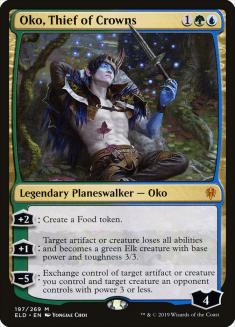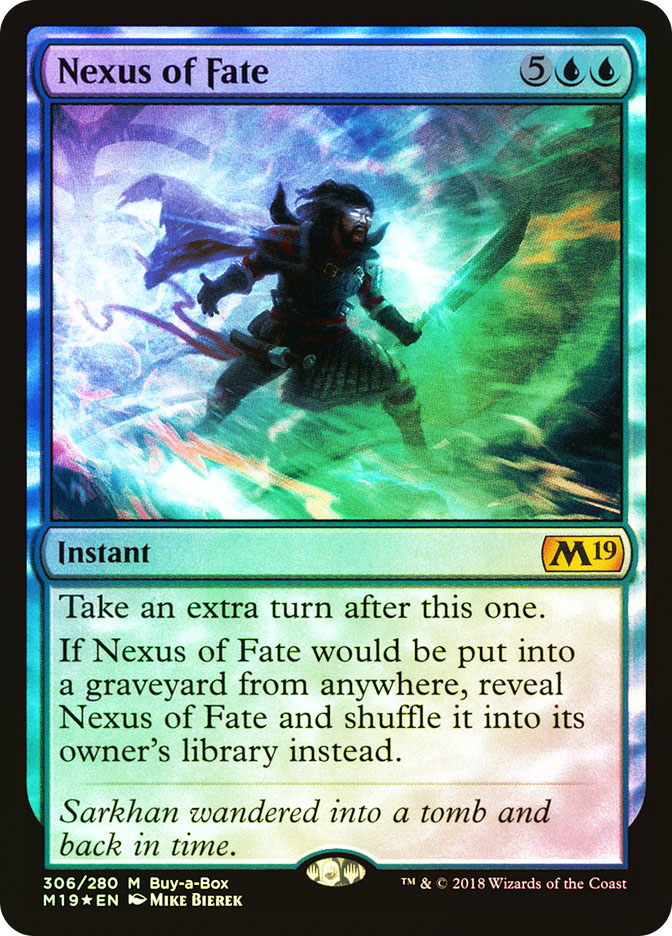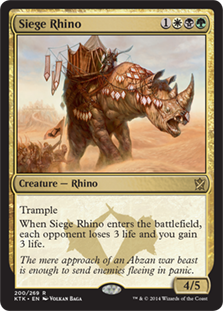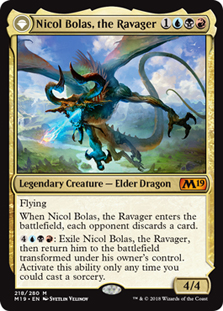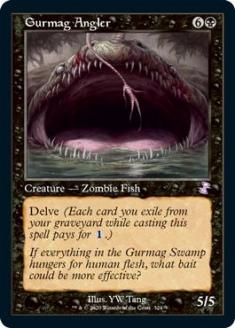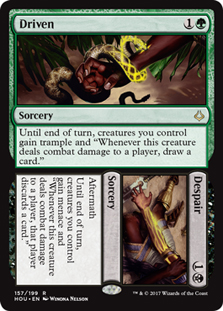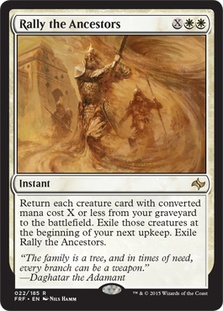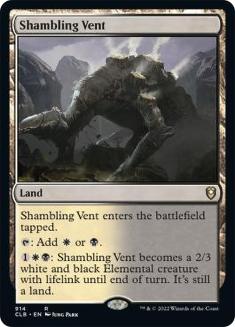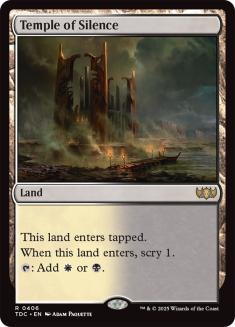It was only a matter of time.
Oko, Thief of Crowns is too good. It took a little while for it to find a home in Pioneer after Felidar Guardian was banned, but Simic Devotion was just a rehash of the Simic Food decks that had been dominating Standard, and no one wanted to go through that again.
I do have to give Wizards of the Coast (WotC) some credit: they said they were going to be aggressive and they are. I wasn’t expecting any changes yesterday given the lack of high-level events over the last week, but I guess the Magic Online (MTGO) data was damning enough for Oko to get the boot, along with the entirely asinine Nexus of Fate.
Good riddance.
Now we get to once again tackle a fresh Pioneer format, and I have two initial takeaways about where the metagame will go.
Azorius Control Will Be the Default Best Deck
Azorius Control was already performing well, and even with the unpredictability of the post-ban format, the deck is very powerful. Supreme Verdict, Absorb, and Teferis cover a whole bunch of threats, and are powerful enough to carry the deck even if the flex slots aren’t yet optimized. Oko, Thief of Crowns was also one of the threats the deck struggled with the most, since it could take over a game while coming down as early as Turn 2. Mana creature decks will stay around but won’t have their best insulation against sweepers, nor will they be incentivized to splash blue, so there won’t be as many sideboard counterspells.
The removal of Nexus of Fate also eliminates the most prominent combo deck in the metagame, allowing control decks to narrow their focus around fair strategies. They get to play more cheap removal in their sideboard for aggro decks, and they don’t have to spread themselves thin with narrow answers for specific, annoying permanents like Wilderness Reclamation.
Clearly, WotC is driving Pioneer towards relatively fair, on-the-battlefield Magic, and Azorius Control looks quite good in that kind of metagame. Combine that with the general nostalgia for control decks and I think that’s a clear frontrunner for the next week or two.
Spot Removal Gets a Lot Better
Oko, Thief of Crowns and Nexus of Fate both make spot removal look laughable. Oko gave the Simic decks all the removal they needed so there was no need to splash, and as a proactive threat it out-grinds the spot removal that other decks play. But it existed alongside mana creatures that pressure opponents to have cheap removal, a squeeze that eventually elevated Oko decks in Pioneer above everything else.
Without Oko, I think it will be much easier to contain the green decks with spot removal, letting traditional midrange decks thrive in Pioneer to an extent we have yet to see. These midrange decks also struggled with Nexus of Fate, since they had lots of dead removal in Game 1, and a weak clock even when they got to replace that removal with better disruption.
Cards like Siege Rhino and Nicol Bolas, the Ravager should improve significantly in a format where the marginal value they provide isn’t laughable in the face of Oko and backing up powerful threats with removal actually matches up well with what everyone else is doing.
Ultimately, I think these bans push the format in a more interactive direction, rather than decks that are simply going over the top of each other with powerful effects. And in that kind of metagame, I want to be playing recursive threats, utilizing the graveyard to overcome my opponent’s spot removal. These decks also have the potential to create overwhelming battlefields if left unchecked, so you have a strong proactive plan that is still resilient to removal.
The reason graveyard decks haven’t performed well in Pioneer yet is speed. The enablers just weren’t able to fill the graveyard fast enough in the face of the other powerful proactive decks in the metagame. But if those decks are held in check by removal-heavy strategies, graveyard decks will shine. Every set of bans serves to slow the format down a bit and make interaction better, thereby inching us closer to a world where graveyard decks are among the best things to be doing.
Even with Oko and Nexus around, two graveyard decks had been creeping around, putting up solid results on MTGO: Sultai Dredge and Zombie Rally.
Sultai Dredge
Creatures (24)
- 4 Narcomoeba
- 3 Satyr Wayfinder
- 4 Gurmag Angler
- 4 Prized Amalgam
- 3 Haunted Dead
- 2 Scrapheap Scrounger
- 4 Stitcher's Supplier
Planeswalkers (1)
Lands (20)
Spells (15)

This is the most obvious graveyard deck in the format, akin to Modern Dredge. Unfortunately, you don’t have access to actual dredge cards, so the enablers here are one-shot effects like Grisly Salvage and Gather the Pack. But with the dredge engine not taking up so much space, there are plenty of enablers to have multiples a significant portion of the time, so you will get through your deck quickly enough.
All the payoffs translate over from Modern, except for Bloodghast, which this deck doesn’t enable well without Life from the Loam anyway. Gurmag Angler gives you a bigger body than Modern Dredge decks, since you don’t have Conflagrate to finish opponents off or clear away big blockers. You should be able to cast it consistently on Turn 3, greatly improving your clock against control and combo decks, while also letting you contend more on the battlefield against creature decks.
Driven // Despair ties the room together. It’s a great piece of disruption against control decks that would like to ignore your weak creatures like Satyr Wayfinder and Narcomoeba, and the menace from Despair lets you punch through clogged battlefields. It’s a payoff that plays well in all styles of games; unlike Creeping Chill and Narcomoeba, it doesn’t make you want to retch if you draw it naturally.
As an engine deck, there’s not much room in the maindeck for interaction, but you get to play plenty in the sideboard. The two I particularly like are Caustic Caterpillar and Ritual of Soot. Caterpillar isn’t as efficient an answer to Rest in Peace as other options, but you can dig for it with Grisly Salvage and Gather the Pack, so you’ll have the answer more reliably, and that’s what matters most. With Grisly Salvage being an instant, you don’t even need to commit cards to your graveyard until you see the Rest in Peace on Turn 2. If they don’t have it, you can stock your graveyard and hopefully recur some creatures immediately, and if they do, you can dig for the answer and cast it on Turn 3, ready to start the engine after that without sacrificing much.
Ritual of Soot is just a card that most people won’t expect. Sweepers are typically good against creature decks, but you’re fine playing the control role against aggro decks since your creatures keep coming back for more and theirs don’t. Whether Ritual of Soot is better than Languish is unclear, but some sort of sweeper helps a ton because graveyard decks can get overwhelmed by quick aggression when you’re setting up the engine.
Zombie Rally
Creatures (27)
- 2 Nantuko Husk
- 2 Diregraf Colossus
- 4 Cryptbreaker
- 2 Dread Wanderer
- 4 Wayward Servant
- 4 Stitcher's Supplier
- 3 Lazotep Reaver
- 4 Corpse Knight
- 2 Foulmire Knight
Planeswalkers (3)
Lands (22)
Spells (8)
Sideboard

This is certainly my favorite of the two decks, but maybe not for the reason you think. I have an unnatural love for Lazotep Reaver. It’s an underrated card that hasn’t really found a home, yet works great here. It curves perfectly with Cryptbreaker, letting you start drawing cards starting on Turn 2, and gives you two bodies for Corpse Knight, Nantuko Husk, and the like. It’s the perfect enabler card for this kind of deck while retaining a fine rate on stats alone.
The other Zombies also have fine stats, so this deck doesn’t need any graveyard enablers beyond Stitcher’s Supplier. It functions perfectly fine as a tribal aggro deck that can grind well into the late-game with Cryptbreaker and combo kill with Rally the Ancestors. I love decks that play every stage of the game and every strategy because they are very difficult to play against. You can ignore graveyard hate by being an aggro deck, trump sweepers with Rally, and counter opposing aggression with your attrition cards.
From the other side of the table, do you want Negate against this deck? If you don’t have a good answer to Rally otherwise, you probably need to bring it in, but I wouldn’t feel good about it. As the Rally player you can cut the card and still be a good deck if your opponent is overloaded on counterspells and graveyard hate. Having a powerful end-game card in your deck is good, but not being reliant on it is great.
Much like Sultai Dredge, this deck doesn’t have a ton of room for interaction, and most lists choose between Fatal Push and Dark Salvation in the maindeck. I’d love to play the latter, since it’s incredibly powerful, but killing mana creatures is so important that I would favor the one that functions on Turn 1 unless the metagame shifts far away from green decks in the wake of the Oko ban. We could easily be heading that way, and against Azorius Control Fatal Push is blank, so monitor the metagame going forward and choose accordingly. I would sideboard whichever one you choose not to maindeck, since they are the two best removal options in the archetype, and there are matchups where you’ll want both.
Lastly, one change I want to try is Shambling Vent in the place of Temple of Silence. The deck not being reliant on Rally the Ancestors makes digging for it less attractive, and Vent supplements the deck’s naturally aggressive bent, helping its rather weak creatures attack pesky planeswalkers and mitigating flood. Playing both makes for too many lands that enter the battlefield tapped, and a creature-land seems significantly more powerful than a Temple to me.
When graveyard decks are good, there’s a brief window of time where you get to play them in an unprepared metagame with minimal hate, so capitalize early before that window closes. The first two weeks I played Modern Dredge felt like cheating because my deck was so much more powerful than what other players were doing.
That said, neither deck folds to graveyard hate. Both can easily cast their threats and have solid answers to hate cards when necessary. So don’t think you can just jam some more Rest in Peaces and Scavenging Oozes in your sideboard and call it a day. Beating these decks will require treating them as resilient aggro decks and trying to beat them on the battlefield. Your hate cards will win some games when they go unanswered for awhile, but mostly they will be stumbling blocks that stall your opponent while you set up a battlefield that they can’t match.
Having a powerful end-game card in your deck is good, but not being reliant on it is great.
That kind of plan is tough for most midrange and control decks because so much of their disruption is in the form of removal spells and they don’t have a good clock. They may have a big creature or two, but you can go wide around them with recursive threats while they can’t race effectively, or you win the race with Creeping Chill / Rally the Ancestors /Corpse Knight. From the graveyard side, be wary of threats that dominate the battlefield like Lyra Dawnbringer, since being unprepared for them is an easy way to lose.
We’re heading to a more interactive Pioneer format, which I imagine is exactly what WotC wants. The era of aggressive banning is coming to a close, and that means graveyard decks are poised to be major players for the long term. Start gaining experience with them now and learn to navigate around the hate, and you will be greatly rewarded.

